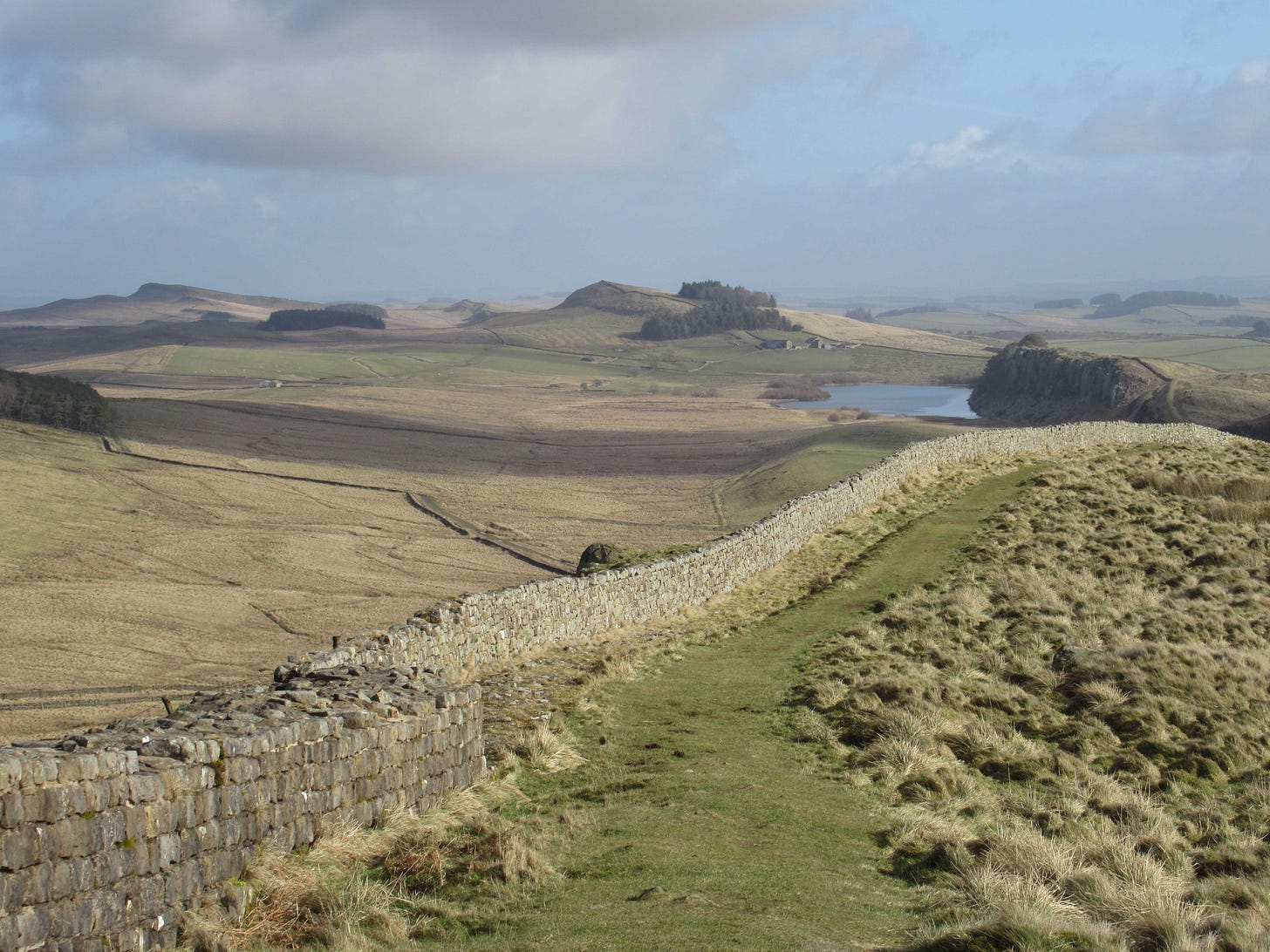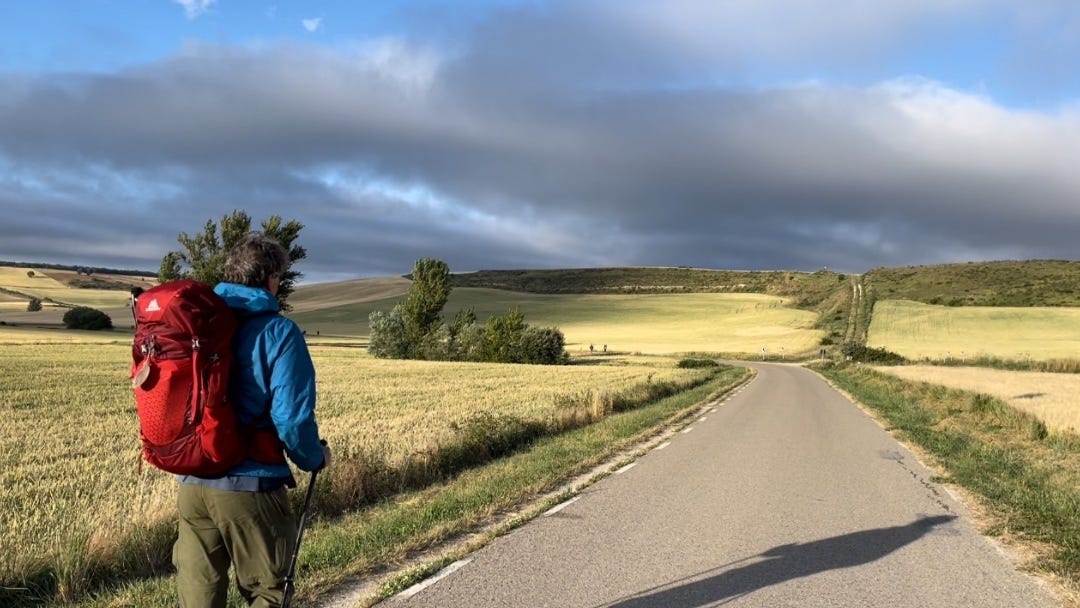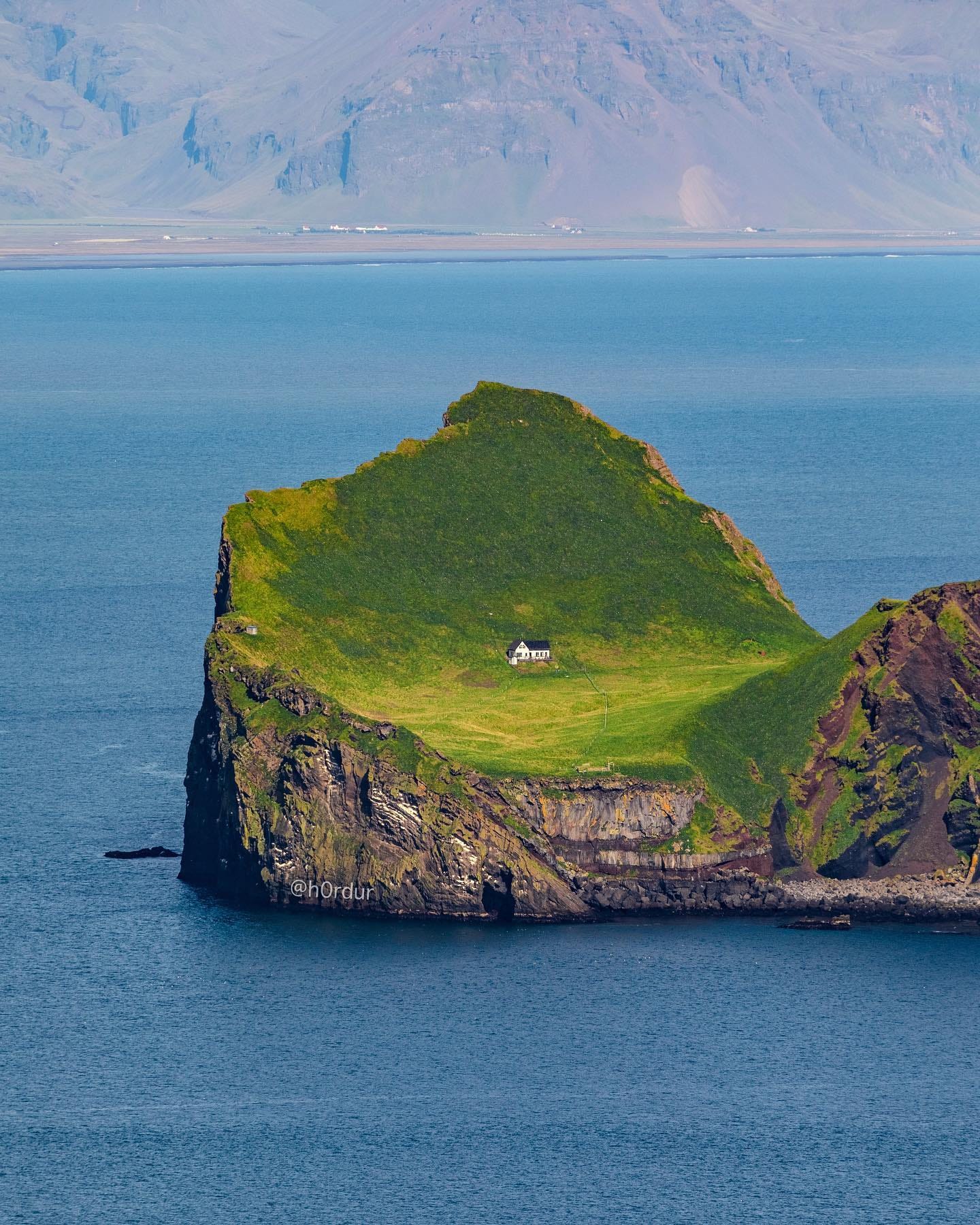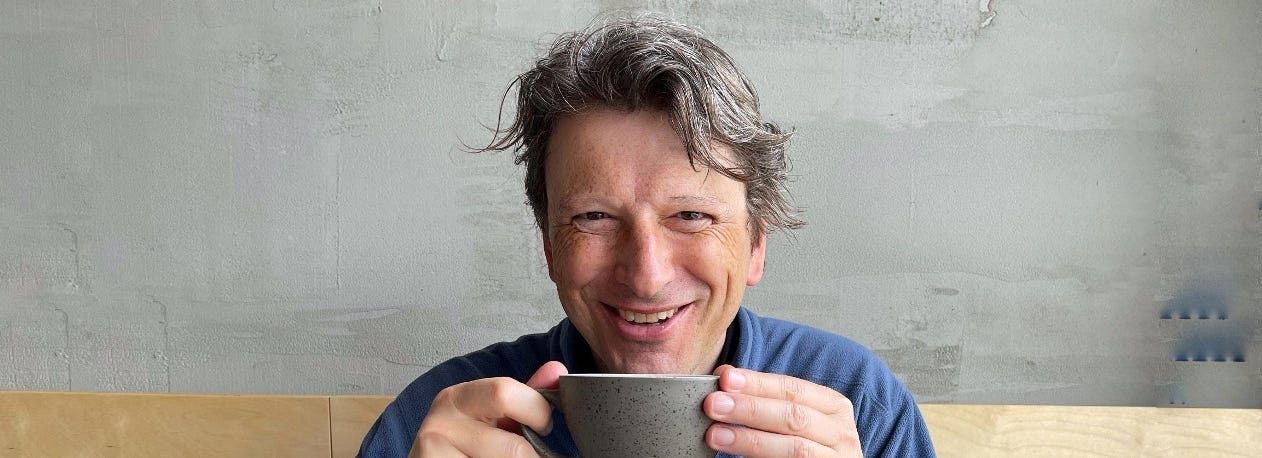When the Trump Government Erases Black History, Independent Voices Must Speak Louder
Plus: Teaching cows to use toilets, Dragon Man's face revealed, and why I'm walking 500 miles across Spain
Before diving into today's stories, I have news that will change our routine for the next five weeks. Starting Monday, I'll be walking the Camino del Norte, the northern route along Spain's Atlantic coast toward Santiago de Compostela. This 830-kilometer journey means I can't maintain my usual daily writing schedule while hiking full-time.
But this is an adventure I'm taking you along on. Instead of our regular newsletter format, I'll be sending "Postcards from the Camino," photos with stories from the trail, and perhaps deeper reflections when I find Wi-Fi and time to write more. Think of it as your morning coffee companion in a different form. Some days might bring just a quick snapshot and thought; others could offer longer stories about the journey or the world beyond.

By late July, we'll return to our regular schedule, but for now, you're getting something unique: a front-row seat to one of Europe's most historic pilgrim routes. The Camino has drawn travelers for over a thousand years, and I'm eager to walk in their footsteps and share what draws people to this ancient path in 2025.
Let's make the most of today's full newsletter before I trade my writing desk for hiking boots.
Subscribe for walking virtually with me on the challenging northern route of the historic Camino de Santiago and (when I'm back from Spain) my regular mix of hope over despair:
For those who want to join the journey more closely, I'll be sharing daily 10 a.m. snapshots on Patreon, whatever I see at that exact moment, rain or shine. These won't be my best photos; they'll be honest glimpses of the walk, whether I'm trudging through an industrial zone in the rain or catching my breath on a hillside. Think of it as the unfiltered version of the Camino, captured precisely at 10 a.m. each day.
Juneteenth Under Siege
Today marks 159 years since Union troops arrived in Galveston, Texas, bringing news that the Civil War was over and all remaining enslaved people in Texas were free. What began as a regional celebration has evolved into a national holiday that recognizes both emancipation and the ongoing struggle for civil rights.
But this year's Juneteenth arrives shadowed by the Trump administration's systematic assault on the very history the holiday commemorates.
Since his inauguration, Trump has wielded Project 2025's 900-page conservative blueprint to erase Black history under the guise of eliminating diversity, equity, and inclusion programs. Nearly two-thirds of his first executive orders aligned with Project 2025's recommendations, targeting DEI initiatives across federal agencies while revoking protections against racial discrimination for federal contractors.
The erasure campaign began immediately. Harriet Tubman was temporarily deleted from the National Park Service website. Jackie Robinson disappeared from Department of Defense sites. Civil rights hero Medgar Evers, assassinated by a KKK member, vanished from Arlington National Cemetery's website honoring Black war veterans. The administration has purged military training materials featuring the Tuskegee Airmen and removed references to the oldest U.S. armory for Black militia from Virginia National Guard websites.
The administration also targeted the National Museum of African American History and Culture, accusing the Smithsonian of promoting "divisive, race-centered ideology" and narratives that "portray American and Western values as inherently harmful and oppressive." Multiple artifacts have been removed from museum displays, while the U.S. Naval Academy's library eliminated approximately 381 books on civil rights, racism, and African American experiences.
The impact extends beyond federal agencies. Across the country, Juneteenth celebrations are being scaled back or canceled as organizers face funding cuts and safety concerns linked to anti-DEI policies. In New Jersey, an NAACP chapter had to relocate its annual celebration after federal contractors "misinterpreted" the event as a DEI initiative. A Virginia museum lost its National Endowment for the Arts funding for Juneteenth programming. Cities from South Carolina to Oregon have canceled events citing "safety concerns" and reduced sponsorship.
Rebuilding the First Baptist Church of Williamsburg
The timing couldn't be more meaningful: today, a ceremonial groundbreaking begins for rebuilding one of the nation's oldest Black churches, the First Baptist Church of Williamsburg, whose congregants first gathered outdoors in secret before constructing a wooden meetinghouse around 1805. The church was destroyed by a tornado in 1834, and later, the Colonial Williamsburg Foundation bought the property in 1956 and turned the space into a parking lot.
The archaeological work tells compelling stories of resilience. The congregation acquired land that was low, soft, and often soggy, hardly ideal for building. But the church's congregants, many of whom were skilled tradespeople, made it work by flipping bricks on their side and making other adjustments to lay a level foundation. The congregation numbered about 500, including people from surrounding plantations who gathered despite laws prohibiting large assemblies of African Americans.
Today also marks the anniversary of another milestone: in 1964, the Civil Rights Act passed the U.S. Senate, 73-27, after surviving a lengthy filibuster.
As LaTasha Levy, professor of Afro-American Studies at Howard University, notes: "What we're seeing, businesses pulling back and universities canceling programs in response to attacks on DEI, shows that many institutions and corporations were never truly committed to diversity and inclusion." The systematic dismantling of programs celebrating Black achievement reveals how fragile progress remains, even 159 years after emancipation.
When an administration actively erases the very history that Juneteenth commemorates, independent journalism has a responsibility to amplify what's being silenced. That's exactly why I chose to lead today's newsletter with this story; when powerful institutions abandon their commitment to civil rights, smaller voices must speak louder.
Giant Steps Through Time
Near Hadrian's Wall, archaeologists have uncovered a leather shoe sole so large it would fit a modern U.S. men's size 14, preserved for nearly 2,000 years in the boggy remains of a Roman fort trench. The shoe "was intact from toe to heel and immediately drew impressed gasps from volunteers and staff alike," writes Rachel Frame, senior archaeologist at the Magna Project.

The shoe was discovered at Magna, a Roman fort located west of the famed Vindolanda site and just south of Hadrian's Wall. It was found in an "ankle-breaker"—a deep, narrow trench that would have been concealed by water and mud to trap attackers. The preservation is extraordinary: multiple layers of leather, reinforced with thongs, stitching, and hobnails, with iron studs pounded into the soles to grip the slippery ground and withstand long marches.
The finds paint a picture far beyond military life. The team uncovered a wooden comb, showing high craftsmanship, and a marble makeup palette that would have been used to mix dry pigments with fat or oil to form a paste for the lips, eyes, or face. These weren't just soldiers; this was a community where someone cared enough about appearance to import marble cosmetic tools to the empire's edge.
The Face of a Mysterious Cousin
Scientists have solved one of anthropology's biggest puzzles. The enigmatic Dragon Man skull, recovered from the bottom of a well in northeastern China in 2018, has been definitively linked to Denisovans through DNA analysis—giving us the first clear picture of what this mysterious group of ancient humans looked like.
The skull's story reads like archaeological fiction that could have been lifted straight from an Indiana Jones movie. A laborer in Harbin discovered it in 1933 while constructing a bridge during the Japanese occupation. The man took the specimen home and stored it at the bottom of a well for safekeeping, where it remained unknown to science for decades until his relatives learned about it before his death.
Denisovans were first discovered in 2010 from ancient DNA in a pinkie fossil found in Denisova Cave in Russia's Altai Mountains. Additional remains found in the cave and elsewhere in Asia have continued to add to the still-incomplete picture. But until now, only tiny bone fragments existed, nothing that could reveal their appearance.
The molecular data came from dental calculus—the gunk on teeth that hardens over time and preserves DNA from the mouth. From this, researchers recovered mitochondrial DNA revealing a link between the sample and the known Denisovan genome.
According to the findings, Denisovans would have had very strong brow ridges, brains "on par in size to Neanderthals and modern humans" but larger teeth than both cousins. Overall, they would have had a blocky and robust-looking appearance. As one researcher noted, they would still be recognizable as human, just "slightly less mysterious than before."
The Loneliest House That Isn't
You may have seen the short video I posted on Notes yesterday. It showed a single white house on an impossibly green island, surrounded by dramatic cliffs and an endless ocean. It sparked countless questions about who lives in "the loneliest house in the world."
The truth is more interesting than the myth. Elliðaey Island, off Iceland's southern coast, doesn't house a mysterious hermit or reclusive celebrity. The building is a hunting lodge built in 1953 by the Elliðaey Hunting Association, powered by propane gas and lacking water except what's collected from precipitation.
Elliðaey can only be reached by boat from Vestmannaeyjabær on Heimaey island, which has about 4,000 residents. Several outlying islands in the archipelago have similar isolated structures: lodges built by local families who claim membership rights to spend time at them. There's not much to do except admire puffins and scenery, but that's exactly why people come.
I often share stories about community rather than isolation, but I have a lifelong fascination for islands. In high school, long before the internet made everything searchable, I collected information and maps about small islands around the world. The more obscure, the better, tiny dots of land that most people would never hear about. This hobby led me to study geography, which contributed to becoming a diplomat and eventually a journalist, living several months a year on an island you may never have heard of (unless you read my newsletters). It's remarkable how small pieces of land surrounded by water can capture the imagination and shape a life.
Teaching Cows to Use the Toilet
In Switzerland, farmers are tackling environmental problems with an unexpectedly polite solution: cow toilets. The CowToilet system trains cows to urinate on command, separating waste before it can mix with feces and produce ammonia, a significant environmental pollutant.
The Dutch-developed system works by triggering a natural reflex. Gentle pressure on a nerve near the udder creates the urge to urinate, and the urine gets collected in a special container. Cows learn to use the toilet because they receive concentrate feed as motivation. The first CowToilet in Switzerland was presented to the public this week at the Röösli farm in Hellbühl.
The science is straightforward: ammonia forms when urea in urine meets the enzyme urease, which is mainly found in feces. By separating the two, emissions drop significantly. The collected urine can then be used as high-quality liquid fertilizer, reducing the need for artificial alternatives.
From Milk to Cuddles
While Swiss cows learn bathroom etiquette, English cows are discovering spa life. Years of floods and low food prices have driven Dumble Farm in England's northeast to stop milking its cows and instead charge visitors to cuddle them.
"The amount of flooding and the pressures on our land were just making it unsustainable for us to carry on," said Fiona Wilson, co-owner of the farm. In 2022, they sold all but a few dairy cows and began offering "cow cuddling" experiences to fund a wildlife conservation scheme.
For 95 pounds, visitors can cuddle, brush, and stroke cows as they lie in a straw-covered barn enclosure. The experience includes a safari to see Highland cattle. It took over a year to train the cows to feel comfortable with cuddling, but now they've fully adjusted. "They like being pampered. They are like big dogs... It's more of a spa day for the cows," farmer James McCune explained.
"It's been so worth it, just to get so close to the cows, and they are so loving and gentle," said 25-year-old guest Emma Hutton after spending time cuddling one of the animals. I love this concept and hope that visitors will in the future think twice before ordering a steak. The farm uses the proceeds to create habitats that protect wildlife and support declining species, such as lapwing birds.
AI Learns to Tell Donkeys Apart
Staying with animal innovation, researchers at the University of Southampton are developing an app that uses AI to identify individual donkeys at the Isle of Wight Donkey Sanctuary. The project emerged after staff removed name collars for safety reasons, the collars were causing accidents and discomfort.
The app called Ask ELVIS (Equine Long-range Visual Identification System), after a beloved sanctuary donkey who died in 2024, uses machine learning to analyze hundreds of photographs of each donkey from every angle. Visitors who've adopted a donkey can point their phone camera at any animal and learn its name and story.
Currently, the app has only 50% accuracy, essentially a coin flip, but project lead Dr. Xiaohao Cai expects significant improvement by year's end. The real potential lies beyond identification: researchers hope AI could eventually spot subtle health issues in animals known for being "very stoic" about pain.
"The message is that AI isn't just for big state enterprises," said Gordon Pattison, volunteer and trustee. "If you've got an idea, it can help you out. You just need to approach the problem from a different point of view."
Climate change is reshaping agriculture across Europe, forcing farmers to innovate beyond traditional methods. These innovations include teaching cows bathroom manners, transforming dairy barns into cuddle centers, or using AI to read donkey faces.
Summer Adventures in Sky and Water
In Berlin, around 200 people jumped into the Spree River on Tuesday to demonstrate that it's clean enough for swimming after a 100-year ban. The collective swim was registered as an official protest by Fluss Bad Berlin (River Pool Berlin), which has lobbied for years to reopen the meandering river for swimmers.
"For 100 years now, people have not been allowed to swim in the inner-city Spree and we no longer think this is justified, because we can show that the water quality is usually good enough to go swimming during the season," said Jan Edler, who helped organize Tuesday's swim-in.
The ban dates to May 1925, when Berlin closed all traditional river pools because the water was deemed too toxic. Some pools weren't only used for recreation, but were places for poor people to wash if they didn't have bathrooms at home. Even city officials in Berlin's Mitte district say they'd be interested in introducing river swimming again in 2026.
Meanwhile, on Denmark's Fanø island by the Wadden Sea, another summer tradition takes flight. The annual international kite festival has begun, drawing enthusiasts from across Europe to fly everything from traditional diamond kites to elaborate artistic creations against the backdrop of endless North Sea winds (📹 samayla_denmark).
As Edler noted about Berlin's heating summers: "The cities are getting hotter. It's also a question of environmental justice to create offers for people who just can't make it out of the city when it's so hot". Whether it's jumping into rivers or launching kites into ocean breezes, people are finding ways to connect with water and wind as urban temperatures rise.
Finding Freedom in Movement
Today's stories share a common thread: people choosing movement and connection over isolation and restriction, from congregants who built churches despite impossible conditions to farmers who transformed crisis into community experiences, from protesters reclaiming rivers to festival-goers launching kites toward the infinite sky.
The archaeological discoveries remind us that humans have always been remarkably adaptable. That giant Roman soldier walked the same landscape we explore today, wearing carefully crafted shoes built for long journeys. The Denisovan skull shows us cousins who thrived for thousands of years in challenging environments.
Next week, I'll join this long tradition of human movement, walking paths that countless others have traveled for over a millennium. For me, walking the Camino del Norte isn't about reaching Santiago; it's about what happens during each step along the way.
Support independent journalism that walks ancient paths and finds hope in human stories. Subscribe for postcards from the Camino and our return to regular programming in August:
Until the next brew, ☕️
Alexander
When I travel, there is often something extra to enjoy on Patreon:
Or perhaps you liked the article and want to support my writing by buying me a coffee?
If you missed yesterday’s Daybreak Notes & Beans:
The Ambassador Who Sees Trump as God's Chosen Nuclear Decision-Maker
We're living through deliberate chaos. Anchor chains that kept society stable are being cut one by one, setting us adrift with incompetent captains chosen for loyalty rather than skill. When experienced diplomacy matters most, with new wars erupting and dangerous waters ahead, you'd hope for steady hands on the wheel.
Notes
Juneteenth history: Today in History reference
Church rebuilding: AP News, 'Rebuilding one of the nation's oldest Black churches to begin at Juneteenth ceremony'
Roman shoe: ZME Science, 'A Giant Roman Soldier Lost His Shoe Near Hadrian's Wall 2,000 Years Ago'
Dragon Man skull: CNN, 'Dragon Man DNA revelation puts a face to a mysterious group of ancient humans'
Elliðaey Island: Atlas Obscura and Perplexity research
Cow toilet: The Agrarier, 'Peeing on command: Cow toilet to reduce ammonia in the barn'
Cow cuddling: Reuters, 'UK farm swaps milk for cow cuddles as floods and food prices take their toll'
Donkey AI: BBC News, 'AI to help tell donkeys apart at island sanctuary'
Berlin swimming: Euronews, 'Berliners jump into Spree River to show its clean enough to swim in'
Fanø kite festival: Reference from Alexander's notes










Exciting news! Looking forward to witnessing your Camino del Norte adventure with Postcards! Thanks for taking us along.
In honor of Juneteenth, I reached out to corporate entities regarding elimination of DEI programs and received the typical, weak non-answers.
As someone who spends a great deal of time teaching animals to eliminate on cue, love the Swiss and British cow stories 🐄
Buen Camino 🎒☕
Great stories today! So much to anticipate.
A return to Camino, long overdue, Dragon Man, toilet trained cows, Juneteenth and so much more.
Thanks for your excavation of new news!